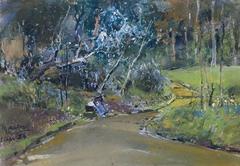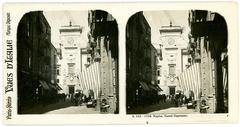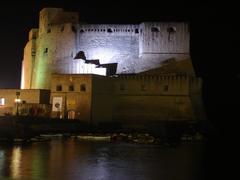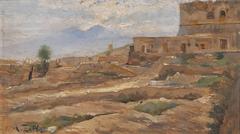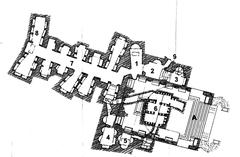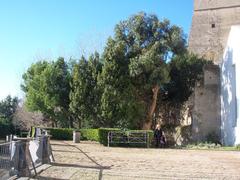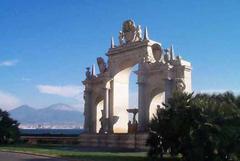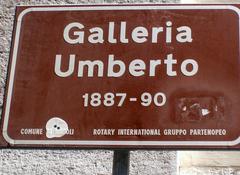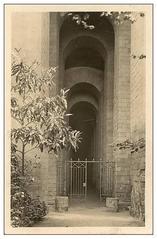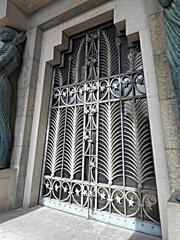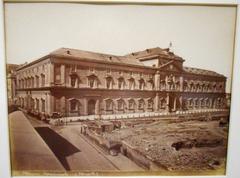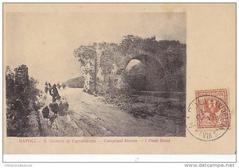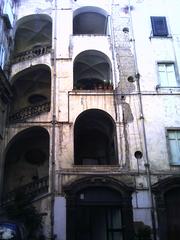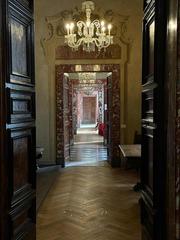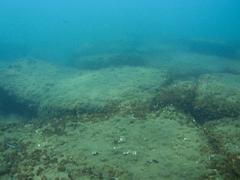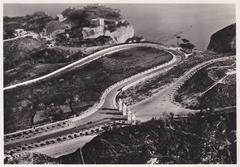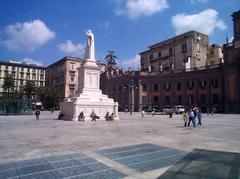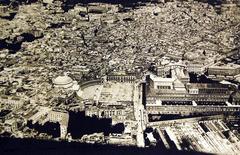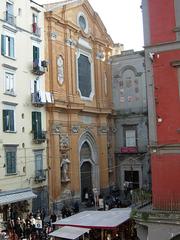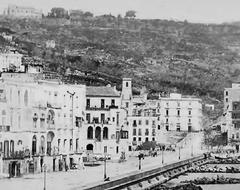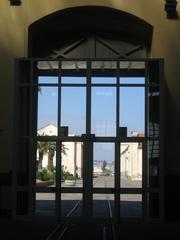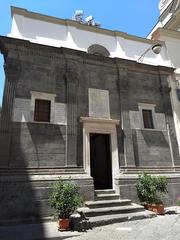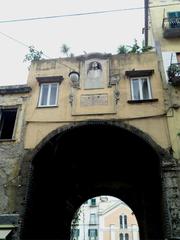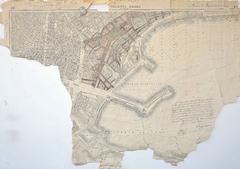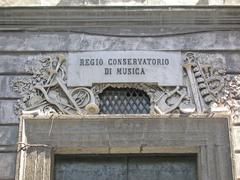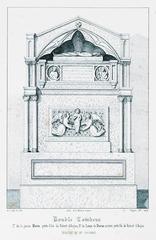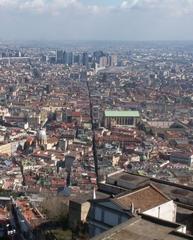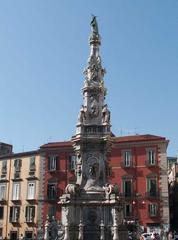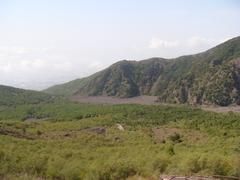Paleontology Museum of Naples: Visiting Hours, Tickets, and Comprehensive Guide
Date: 04/07/2025
Introduction: History and Significance
The Paleontology Museum of Naples (Museo di Paleontologia di Napoli) is a premier institution located in the heart of Naples, Italy. Housed within the historic 17th-century Complex of San Marcellino and Festo, the museum seamlessly combines scientific exploration with rich architectural and artistic heritage. Founded during the 19th and early 20th centuries, it represents Naples’ longstanding tradition of natural sciences, research, and cultural preservation (Napolike; artsupp.com).
The museum’s collection exceeds 150,000 specimens, spanning from the Paleozoic to the Cenozoic. Notably, it holds invaluable “type” specimens, a vast array of invertebrate and vertebrate fossils, and significant Paleozoic flora (ISPRA). As both a research hub and a public institution, the museum extends its role to education, outreach, and conservation, making it a vital part of Naples’ scientific community.
Content Overview
- Origins and Historical Development
- Collections: Scope and Key Highlights
- Research and Public Engagement
- Visiting Information (Hours, Tickets, Accessibility, Directions)
- Architectural and Cultural Context
- Conservation and International Impact
- Tips, FAQs, and Nearby Attractions
- Summary & Visitor Encouragement
Origins and Historical Development
The Paleontology Museum is a testament to Naples’ intellectual and scientific legacy. Established as part of a national movement to institutionalize natural sciences, the museum emerged as a response to the region’s growing fossil collections, which were amassed through geological exploration, academic research, and private donations (Napolike; LolaApp). Since its inception, the museum has played a central role in cataloging and preserving paleontological heritage.
Collections: Scope and Key Highlights
General Collection
The museum’s main collection includes approximately 76,000 invertebrate specimens, significant for their diversity and geographic coverage. These were primarily obtained through geological mapping in Italy and its former colonies, encompassing didactic specimens, rare fossils, and fossil trackways (ISPRA).
Historical Collections
A core group of about 20,000 “type” and reference specimens, studied by renowned paleontologists, form the backbone of the museum’s scientific value. These are organized by taxonomic groups such as Graptolites and Ammonites and are critical for global taxonomy (ISPRA).
Vertebrates and Plants
The vertebrate collection, with around 3,000 pieces, is notable for its Plio-Pleistocene mammals, while the plant collection features rare Paleozoic flora from sites like Monte Jano (ISPRA).
Local and Regional Significance
Special emphasis is given to fossils from Campania and the Mediterranean, including finds from volcanic areas such as Vesuvius and the Phlegraean Fields, highlighting the region’s unique geological history (artsupp.com).
Research and Public Engagement
The museum is internationally recognized for its taxonomic and evolutionary research. Its “type” specimens are reference points for global paleontology. It supports geological mapping and studies of the Mediterranean fossil record, and regularly engages the public through interactive exhibitions, guided tours, workshops, and internships (Discover Wild Science; Prehistoric Saurus).
Visiting Information
Location and Directions
Located at Largo San Marcellino, 10, the museum is centrally situated in Naples, within walking distance of major attractions and public transport (nearest metro: Università). The area is part of the Museum Center of Natural and Physical Sciences (visitnaples.eu; whichmuseum.co.uk).
Opening Hours
- Standard hours: Tuesday to Sunday, 9:00 AM – 6:00 PM (some sources indicate closing at 5:00 PM; always verify on the official museum website before your visit).
- Closed: Mondays and public holidays.
- Special schedules: May apply during university closures, exam periods, or events.
Tickets and Admission
- Adults: Typically €8 or less (some sources indicate under €5).
- Reduced: Discounts for students, seniors, EU citizens 18–25.
- Free: Children under 18, certain groups, and on select cultural event days.
- Where to buy: Online via the museum’s website or at the entrance (artsupp.com; whichmuseum.co.uk).
Accessibility
The museum offers general wheelchair accessibility, with ramps and elevators in most areas. Due to the historic nature of the building, some sections may require assistance. Contact the museum ahead for specific needs.
Facilities
Restrooms are available, but amenities such as cafés and gift shops are limited. Photography for personal use is allowed (no flash/tripods). Cloakroom space is minimal; pack light.
Architectural and Cultural Context
The Complex of San Marcellino and Festo
The museum is set within a stunning Baroque and Renaissance monastic complex, featuring a 16th-century cloister, 18th-century majolica floors, marble works by Luigi Vanvitelli, and paintings by Simonelli, Corenzio, and Stanzione (renatoprosciutto.com; artsupp.com). The blend of art, architecture, and science offers a unique visitor experience.
Museum Layout
Exhibition halls with original majolica floors radiate from the central cloister, harmoniously integrating paleontological displays with historic spaces (girlfromnaples.com). The cloister serves as both entrance and a venue for events.
Conservation and International Impact
The museum is a steward of paleontological heritage, prioritizing conservation of its collections and the historic building. It actively collaborates with international institutions, participates in global research, and shares expertise through conferences and publications (Prehistoric Saurus).
Tips, FAQs, and Nearby Attractions
Visitor Tips
- Plan ahead: Hours may vary; always check the official site before visiting.
- Language: Most labels are in Italian. Translation apps or guided tours are recommended for non-Italian speakers.
- Family-friendly: The museum is suitable for all ages, with hands-on activities for children during special events.
- Combine visits: Other museums in the Museum Center (mineralogy, zoology, anthropology, physics) are nearby.
Nearby Attractions
- Naples National Archaeological Museum
- Orto Botanico di Napoli (Botanical Garden)
- Royal Palace of Naples
- Castel Nuovo
- Historic city center (UNESCO World Heritage)
Frequently Asked Questions
What are the Paleontology Museum of Naples visiting hours?
Tuesday to Sunday, 9:00 AM – 6:00 PM (verify before visiting; some sources mention 9:00 AM – 2:00 PM on weekdays only).
How much do tickets cost?
Standard adult tickets are usually €8 or less; discounts and free entry are available for certain groups and on select days.
Is the museum accessible for visitors with disabilities?
Most areas are accessible; some historic sections may present challenges. Assistance is available.
Are guided tours offered?
Yes, available in Italian and by prior arrangement in English and other languages.
Can I take photographs?
Personal use photography is allowed, except flash and tripods.
Summary: Why Visit the Paleontology Museum of Naples?
The Paleontology Museum of Naples is a singular destination that marries scientific excellence with cultural immersion. Its extensive fossil collections, vibrant research activity, and striking historic architecture create a remarkable visitor experience. The museum’s central location enables easy exploration of Naples’ many historical and cultural treasures (Napolike; artsupp.com). Whether you are a paleontology enthusiast, a student, or a traveler seeking a deeper connection to Naples’ heritage, the museum offers an educational and memorable journey through Earth’s distant past and the city’s enduring legacy (ISPRA; visitnaples.eu).
Maximize your experience:
- Check the latest hours and events on the official website.
- Consider guided tours for richer insights.
- Download the Audiala app for personalized guides and updates.
Sources
- Paleontology Museum of Naples: Visiting Hours, Tickets, and Historical Insights (Napolike), 2025
- Paleontology Museum of Naples: A Visitor’s Guide to History, Architecture, and Practical Tips (artsupp.com), 2025
- Paleontology Museum of Naples: Visiting Hours, Tickets, and Key Exhibits at Naples’ Historic Scientific Site (artsupp.com), 2025
- Paleontology Museum of Naples Visiting Hours, Tickets, and Visitor Guide (whichmuseum.com), 2025
- ISPRA Paleontological Collections (ISPRA), 2025
- Museum Center of Natural and Physical Sciences, Naples (visitnaples.eu), 2025
